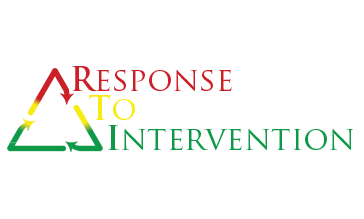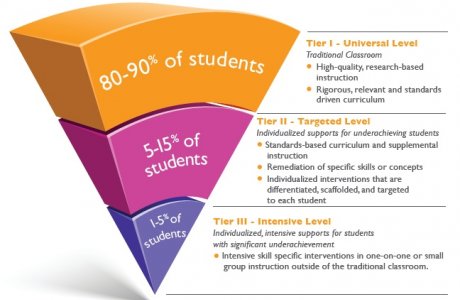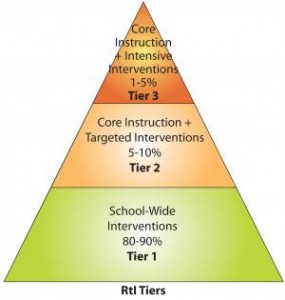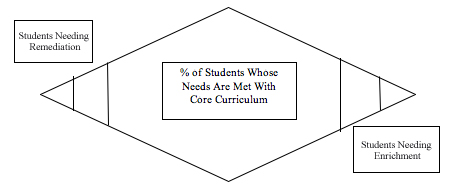What Is RTI? Finding Ways to Help Every Child
The line between disabilities and differences can be subtle, and if your child is struggling in school you might be wondering on which side of the line your child stands. A new approach to helping parents and teachers make this determination is RTI – or Response to Intervention.
IDEA, IEP, and RTI – What are the Differences?
Education is a process of evolving ideas and methods for teaching and learning, and part of that evolution process is determining how to best help students who are struggling in school. In 1975 Congress enacted IDEA – Individuals with Disabilities Education Act – in order to better serve students with disabilities. Then along came the IEP – or Individualized Education Program – which is directly tied to IDEA. The IEP is designed to help those students who are identified with a disability get the special education services that will be most beneficial to them.
But what if your child is struggling and you or even the education professionals just aren’t sure why? Sometimes speech and communication delays are not diagnosed as disabilities, but are still interfering with your child’s ability to succeed in the classroom. The RTI can be a tool to determine how to best help your child succeed in school. Speech, communication, processing, and even behavior issues can all be assessed through an initial RTI evaluation.
How Does the RTI Work?
In 2004 RTI was proposed as a way to empower educators to help students who show signs of struggle, but who aren’t necessarily obviously dealing with a formal disability. The goal of RTI is to identify the students who are at risk, address both academic and behavior issues, and to improve learning and performance in schools.
Unlike IEPs, an RTI program is not a mandated, formal policy adopted by every school. In fact, there are differing opinions as to how best to follow an RTI plan. The first and most prevalent opinion is that the RTI should be looked at like a triangular model. There are various tiers and students are identified, monitored, and reassessed on a predictable schedule.
- Tier 1 – all students are succeeding in the classroom with high quality curriculum that engages all students
- Tier 2 – some students receive intervention when they show signs that the standard curriculum and/or classroom setting isn’t adequate
- Tier 3 – students receive individual instruction in one or more areas and further testing is done to determine if a learning or behavior disability exists
For some educators, however, the RTI triangle model isn’t sufficient. Just like so many other disciplines, the more that is learned about an overall process, the more likely it becomes that new approaches are developed. Even in fields such as software testing there are various models for testing, all with the same general goals. One suggestion for a newer model for the RTI is as follows:
This model proposes a more continued, cyclical approach to learning assessments and interventions. It also highlights the importance of enrichment and other activities for students.
No matter which model your school district follows, if you have concerns about your child’s progress in school for any reason, talk with teachers and school administrators to make sure a plan is in place that you agree with for your child. The IEP definitely has a place for some students with identified learning disabilities, but sometimes the differences in communication needs can be addressed through an RTI instead. In fact, some educators think that the RTI will play an important role in reducing an increase of IEPs and increase general success in the classroom.






